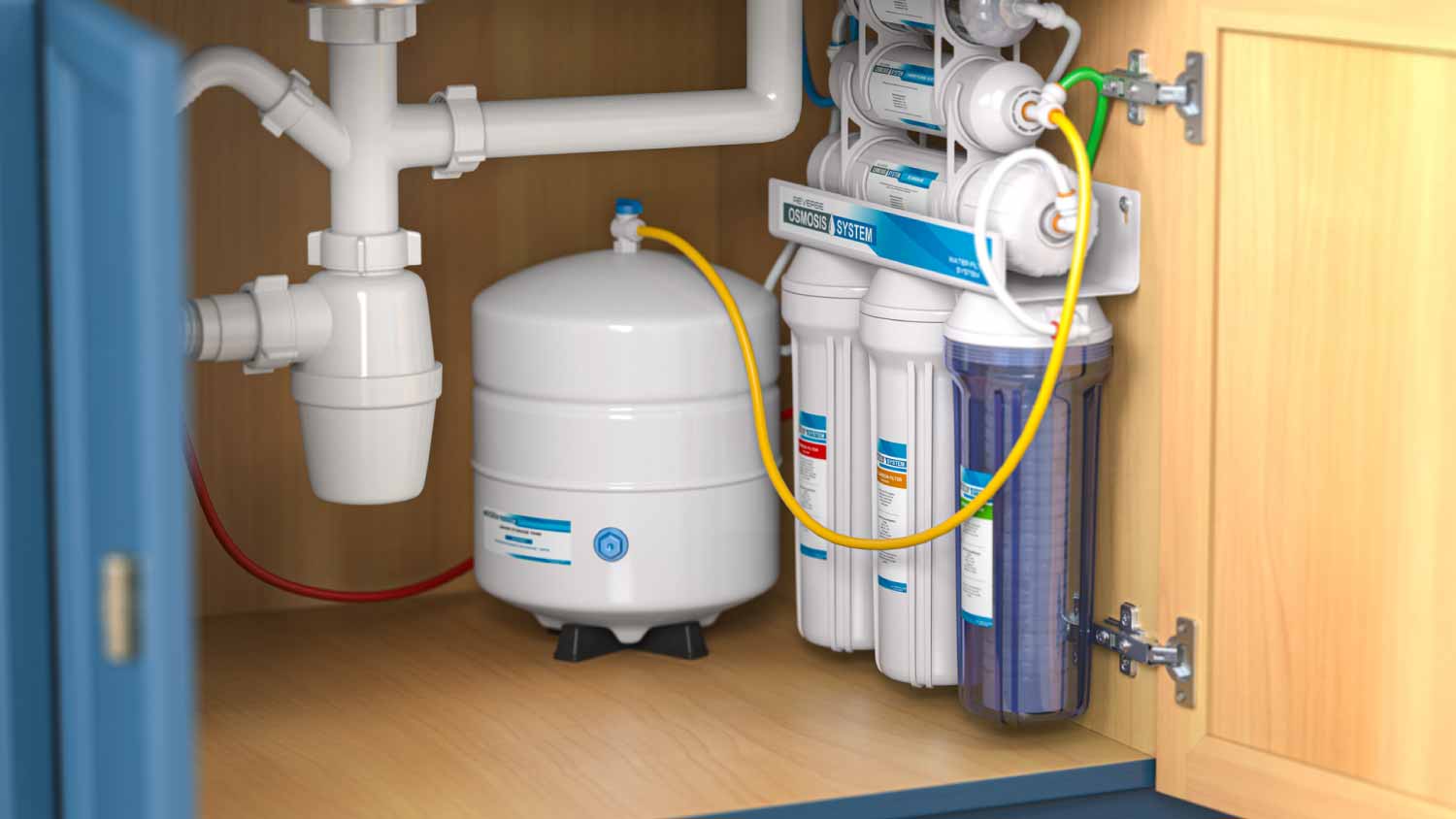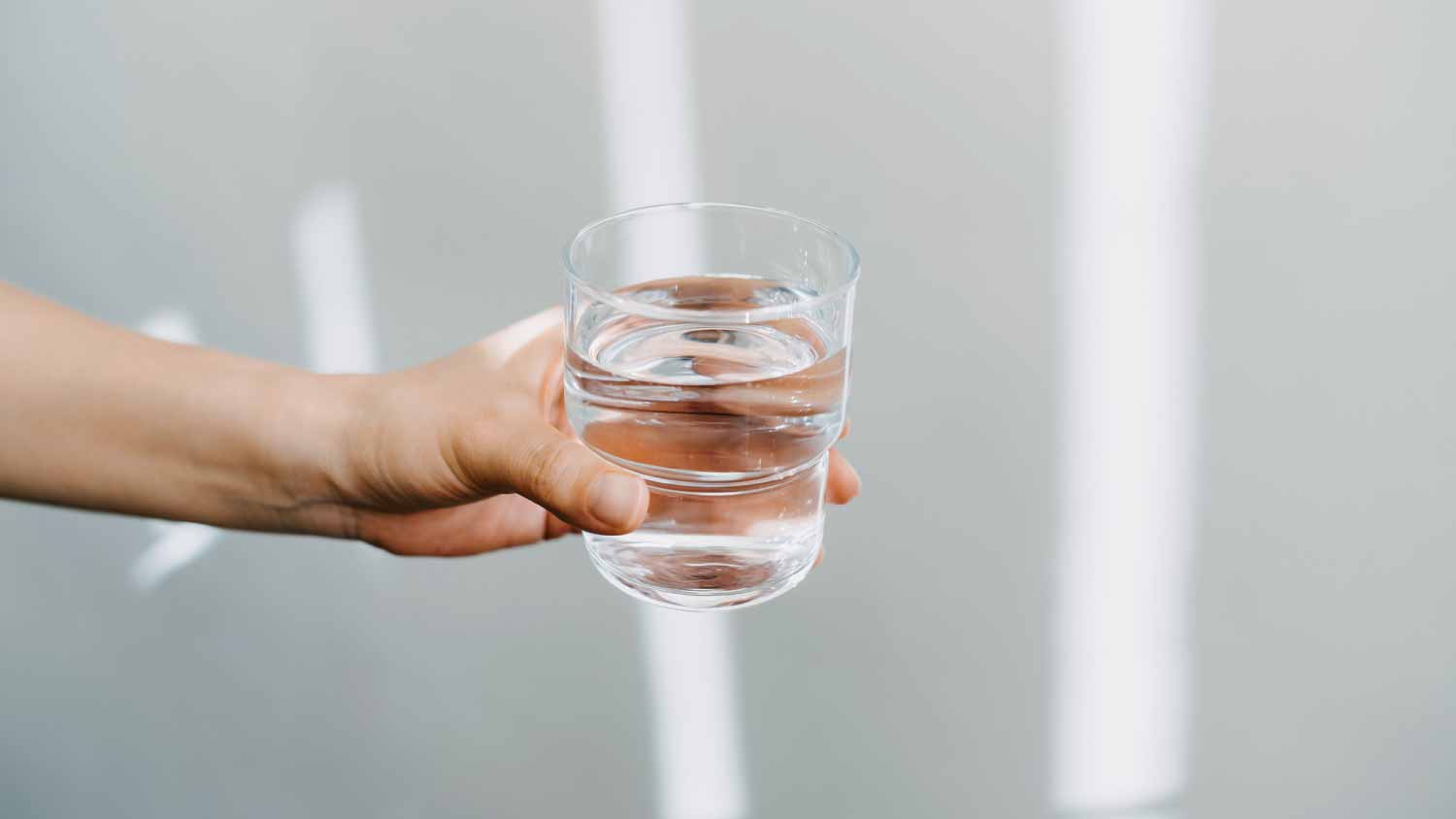
Dry wells are handy for anyone who’s experiencing drainage problems. But dry well installation costs can vary depending on its size, location, and volume.
Crisp clean cistern water can actually quench your thirst


Turning a cistern into a source of potable well water can involve major upgrades. A whole-home water treatment system costs around $2,300, but your total cost will vary based on your unique home.
This project can involve plumbing, filtration, electrical work, and permits—mistakes could lead to unsafe drinking water or code violations.
A professional can properly install filtration systems, pumps, and plumbing connections while ensuring everything meets local regulations.
DIYers would need to purchase or rent water pumps, filter systems, plumbing tools, and testing kits to attempt this themselves.
Skipping key steps like filtration or failing to maintain the system can result in health risks, contamination, or costly repairs. Pros help avoid these issues.
Whether you’re considering a DIY project or you’re leaning toward hiring a local professional to help, transforming your cistern water into a drinkable source can be a great way to add a water supply backup to your home. From assessing and cleaning your cistern to installing a reliable filtration system and maintaining top water quality, we’re navigating the steps you can take to make your cistern water drinkable.
Having drinkable cistern water in your home is terrific, especially if you want to shift toward more sustainable, cleaner living. Harvesting rainwater is environmentally responsible and gives you a reliable water source during shortages. Cistern water can also be a cost-effective choice.
Beyond the economic advantages, the cistern's filtration system ensures a consistently pure water supply, addressing many health concerns that exist in other water options.
Taking the do-it-yourself route can save you thousands in installation fees, but it’s important to check local guidelines before diving into your rainwater-harvesting adventure. Some states, like Colorado, have regulations restricting how much rainwater homeowners can collect. In some cases, it's even illegal for most homeowners to harvest their own rainwater.
If you’re cleared to collect rainwater in your state, there are a few steps to do to prepare your cistern water for consumption.
Invest in a high-quality water filtration system ideal for cistern water and its common contaminants
Calculate the system's capacity based on your household's water needs
Purchase food-grade materials for any additional components, such as pipes and connectors
Gather tools like a water testing kit, wrenches, and sanitation agents
Harvesting rainwater through cisterns is an eco-friendly, cost-effective water supply solution. However, ensuring the collected water is safe for drinking requires a little bit of work. Dive into how you can transform your cistern water into a potable resource with the three steps below.
Before you can make your cistern water drinkable, you’ll have to check out the condition of your water storage system. Inspect the cistern for:
Debris
Sediment
Any potential contaminants
A clean cistern is the only way to produce safe drinking water. To clean it:
Drain and scrub the interior if there's visible dirt or algae
Ensure the lids or hatches are secure so external pollutants can’t get in
For larger cisterns, a professional cleaning service might be necessary
Regular inspections and cleanings help keep the cistern safe and clean, which lays the foundation for potable water.

Investing in a robust filtration system is the next step to turn your cistern water into a safe drinking source. Choose a system designed for rainwater or cisterns that addresses common contaminants like:
Sediment
Bacteria
Debris
Consider factors such as filtration capacity and maintenance requirements. Popular options also include:
Cartridge filters
UV purifiers
Activated carbon filters
Install the system at the cistern's outlet, which will ensure it effectively removes any impurities. After it’s installed, remember to regularly replace filter components per the manufacturer's recommendations.

Regular monitoring and maintenance will help guarantee a continuous supply of drinkable cistern water in your home. Here are a few things that will make the job easier:
Conduct periodic water tests for pH levels and microbial content. A water testing kit can help identify any changes from safe standards. Basic DIY test kits cost $20 to $50 and are capable of detecting 20 or so potential toxins.
Adjust the pH levels if necessary to ensure they fall within the recommended pH range of 6.5–8.5. Implement a maintenance schedule for the filtration system as well as for cleaning and replacing components. Natural water sources may exhibit lower pH levels due to factors like acid rain or higher pH levels in limestone-rich areas.
Keep the cistern area free from potential contaminants like debris and sediment buildup, bacterial presence in stagnant water, chemical runoff from surrounding areas, infiltration of heavy metals like lead or copper, and algae growth due to sunlight exposure.
A DIY approach to creating drinkable cistern water might sound appealing and it’s definitely cost-effective, but water purification isn’t a light weekend project. Converting cistern water into a potable resource requires a systematic approach, from checking on the cistern's condition to putting in a reliable filtration system and maintaining ongoing water quality. Following these steps ensures your household's health and safety and contributes to a sustainable and self-sufficient water supply.
If these steps seem overwhelming or outside your range of expertise, bring in the pros who can ensure your filtration system won’t miss a beat on safety. Plus, professional well pump contractors are in the know about cistern and rain collection regulations. So, if you're eyeing that crystal-clear, safe-to-sip cistern water, consider hiring a friendly local professional near you.
From average costs to expert advice, get all the answers you need to get your job done.

Dry wells are handy for anyone who’s experiencing drainage problems. But dry well installation costs can vary depending on its size, location, and volume.

Drilling a well is no small feat. You’ll need to plan for excavating, a pump, and more. This guide will help you estimate and manage your well drilling costs.

Find out the average heat pump repair cost, what impacts pricing, and how to save. Get transparent estimates and tips for homeowners planning repairs.

Ready for a new shallow well? Follow these eight DIY steps on how to replace your well pump and secure a safe, reliable water supply for your home.

Well pump pressure switch problems leaving you dry? Get flowing again with our guide on how to tell if it’s failed or needs repairing.

Learn about the pros and cons of installing and using a cistern vs. a well so you can choose the best water supply system for your home.